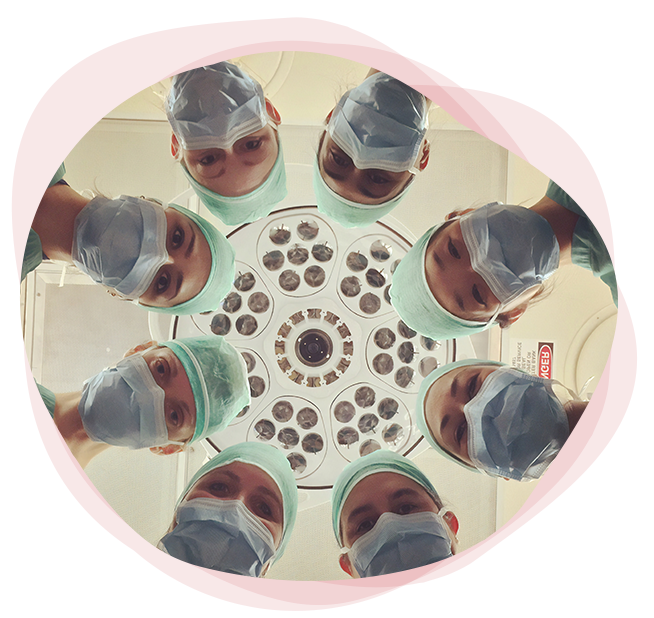THE RECRUTER’S GUIDE TO
FHIR®
One of the biggest buzzwords to take over the healthcare technology sector is FHIR®, an interoperability standard, and one of THE hardest skills to hire effectively for.
But what is FHIR®?
Why do you need it? And how do you go about hiring someone that can carry out the FHIR® framework for your healthcare business? In this guide, we’ll give you everything you need to know to hire effectively for FHIR® roles.
One of the biggest buzzwords to take over the healthcare technology sector is FHIR®, an interoperability standard, and one of THE hardest skills to hire effectively for.
Why do you need it? And how do you go about hiring someone that can carry out the FHIR® framework for your healthcare business? In this guide, we’ll give you everything you need to know to hire effectively for FHIR® roles.
What is FHIR®?
Essentially, FHIR® (pronounced “fire”) is a standard for exchanging healthcare information electronically by using modern web technologies. It stands for Fat Healthcare Interoperability Resources and was developed by the standards body Health Level 7, or HL7 for short.
The basic goal of FHIR® is to improve the way health systems exchange information, to make this transfer fast, safe, and, most of all, easy for everyone involved to understand.


FHIR® data consists of discrete data elements, known as resources, and standard interfaces to create, read, update, or delete those data elements. Data that is exchanged represents content, including patients, procedures, medications, claims, and other resource types.

FHIR® has been around since 2014, but has only started gaining momentum recently. FHIR® is continuing to make progress in advancing healthcare interoperability by enabling health IT developers to build applications to exchanged data using the web technologies they’re familiar with, such as HTML, XML, JSON, and others, rather than the outdated HL7 clinical language.
The difference between FHIR® and HL7
HL7 is the earlier format that was, and still is, used in healthcare. It was designed before the internet came into use, which makes it an outdated way to both store and exchange information.


The difference between HL7 and FHIR® is that HL7 only contains the data, or payload, while FHIR® contains both the payload and the structure, known as a template, of what the data should look like.
Two systems sharing data in HL7 may not be able to communicate if they both have a different understanding of what the data means. With FHIR®, two systems sharing data will always understand the data because FHIR® contains both the data and a definition of what the data is. This is called the Structure Definition in FHIR® and is a fundamental building block of the standard.

3 use cases for FHIR®

Hospitals and healthcare practices have a variety of systems that require interoperability. From the bedside heart rate monitor to the health system’s primary electronic health record, each of these systems need to be able to share data. Systems not only need to integrate within one institution, but also with other hospitals, ambulances, labs, and clinics.
The reasons a health system might need to implement FHIR® depends entirely on the needs of the business. There are 3 use cases that can help you decide why you need FHIR®:

Sending FHIR® from your system.
Your health system needs a software engineer to produce FHIR® files. A software engineer will be able to develop the backend service interfaces that can communicate with other systems. They can also develop backend APIs and web frontends that a clinician can operate.

Receiving FHIR® into your system.
Your health system requires a developer to read FHIR®. This requires someone to take the input of a FHIR® file, write a piece of software for it, and then use the FHIR® file. A developer that can write FHIR® can also write code to consume FHIR® files.

Designing a FHIR® interface.
Your health system needs two systems to integrate with each other. This could include integrating an Electronic Medical Record (EMR) with a Personal Health Record (PHR) to allow patients to access their own medical records. Essentially, the EHR needs to be able to communicate with the PHR. To connect the data in these two systems, a structure definition author needs to code and deliver a template that will hold the required information. This part of the process is doesn’t call for a developer, but rather someone with the technical skills and business insights that knows what information is required in the template. Since the template is focused on business operations, it is a completely different process by this point.
The importance of a good FHIR® developer
FHIR® represents the future of interoperability and in order to stay ahead of the curve, your health system will need someone with this skill sooner rather than later. Before interviewing and hiring a FHIR® expert, it’s important for recruiters and hiring managers to understand the significance of this position.
Considering that FHIR® is a niche skill, that the potential employee will be working on systems that handle sensitive patient data, and that healthcare integration is a costly endeavor, it’s essential to make a good hire the first time.


Finding someone with this skillset can be like trying to find a needle in a haystack. Just because a developer has experience with FHIR® doesn’t mean that they are the right hire. It’s far more important to have the expertise rather than the experience. A regular developer or software engineer doesn’t necessarily know the FHIR® language.
It’s a niche skillset that requires focused and intensive training. It can take two months of in-depth study to truly learn the ins and outs of FHIR®. This high level of study will separate the good developers from the bad.

Having quality developers is more important than ever due to Covid-19, and lots of organizations are eager to integrate their systems with other distributing and caregiving systems, highlighting the need for systems to work together.

Interview questions to ask a FHIR® developer

Here are some simple yet effective questions about FHIR® for an interviewer to ask their candidates. While the questions might seem complicated for the less technically inclined, they are designed to help you weed out the good candidates from the bad.
How long have you used FHIR®?
Anyone who says 10+ years is telling you a story, FHIR® hasn't been around for that long.
If someone says they have used FHIR® for five years, there is an opportunity to dig deeper. Follow up questions to ask in that case include inquiring as to how many projects, the type of projects, how long the projects lasted, and how they used FHIR® in those cases?
Are there any platform or toolsets that you use to work with FHIR®?
For a Java developer, HAPIFHIR is a pretty big standard. Any Java developer who claims to have worked with FHIR, but doesn't have HAPIFHIR experience is an immediate red flag and warrents further questioning.
There are other toolsets to interact with FHIR®, such as C#, and anyone that has meaningful experience with FHIR® will have used at least a few of them. You can't use FHIR® from scratch without other tooling.
How long did it take you to learn FHIR®?
As mentioned earlier, it can take up to two months of focused training in FHIR® to have a solid foundation, but it takes more practice to become an expert.
A candidate who claims to have picked up the skillset in a week either doesn't understand the complexity of FHIR® or is not telling the whole story.
What is the FHIR® Structure Definition for?
The Structure Definition is one of the fundamental building blocks of FHIR®. It's what defines the data structure of an interface, the cardinality (the number of fields there are), must support fields (fields that any system must support to be conformant), required fields (fields that must be supplied for data to be valid), constraints (restrictions on what data can look like), extensions (additional data not natively supported by FHIR®) and other related items.
A candidate who doesn't understand this and can't explain it in plain language is a red flag. While FHIR® is very complex, understanding the building blocks is not.
Do you know HL7?
As discussed earlier, HL7 is the predecessor to FHIR®. Most healthcare systems in use today will use HL7 and FHIR® is still gaining traction.
While having an understanding of HL7 is not required to understand FHIR®, it does give you some clues. Someone who knows HL7 can be a positive because they will have more domain knowledge.
If a candidate does know HL7, a great follow-up question can be to ask them to explain the difference between FHIR® and HL7.
Their answer will help weed out the candidates who are experts in HL7 but not FHIR®. Just because someone is an expert in HL7, doesn't mean they are an expert in both.
A very simple explanation for the fundamental difference between the two is that HL7 only contains the data, the payload, while FHIR® contains both the data, and the structure, template, of what the data should look like. This is the most simple answer a candidate can provide. Anyone who knows both HL7 and FHIR® will know this fact in their sleep.
What version of FHIR® do you have experience with?
All versions of FHIR® build on their predecessors. If the candidate doesn't have experience with the version you are hiring for, that's not an issue. This question is designed to get an idea of the depth of their experience.
The older versions include DSTU 2, 3. while the newer versions include R4, R5. Generally, a candidate who has experience in more than one version is someone who has more experience in FHIR®.
A candidate with experience in the older version should not be an issue. While DSU2 is over four years old now, many hospitals are still developing for this standard today.
We have a project to integrate two systems. We have the Structure Definition for the sending system. We need to define the code or process to generate a conformant FHIR® file. What do you need to get the project started and what questions do you have?
This is a trick question. The Structure Definition contains everything needed, all of the instructions, to build a conformant FHIR® file.
The only question that a candidate might ask would be if the Structure Definition is complete. If an IGPack, or Implementation Guide, is available or other related questions. The important part to note is that FHIR® by definition contains all the things needed to produce a conformant message. Nothing else should be needed.
There are more questions to ask a candidate, but without getting into too many technical details, it’s important to separate those who know from those who don’t. These questions will give you a great starting point and a candidate who can answer these basic but important questions is someone worth interviewing further.

Not confident you can size up a FHIR® expert? Let us do it for you.
DevStaff Canada has built healthcare teams that have worked on some of the largest projects globally, including Health Canada, the Department of Defense, and the government’s response to Covid-19. Thanks to our extensive background in technology, we’ve implemented a rigorous candidate selection process that saves our client’s time.
If you’re tired of wasting time with bad interviews, we’re ready to help you find the crème-de-la-crème of the technology industry. Contact us to learn more about our amazing staffing services.



